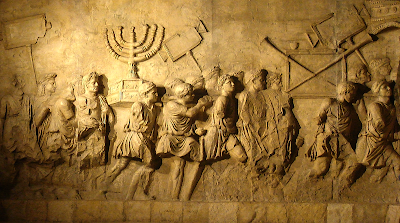Warfare had existed since the dawn of man, the potentials of the human mind are massively diverted into warfare and as a result, technology is an essential element of warfare. It could spell a nation’s victory or defeat. Military development caused warfare to be a bloodier ordeal as more efficient killing machines were constantly invented and tested in combat. Armies must be eager to adopt newer weapons; the failure to do so would bring untold destruction.
There is no doubt that the back bone of the classical army is the melee weapon. Early humans fought with wooden clubs and stone-edged weapons. When metallurgy is introduced, warfare changed radically as sharper and stronger melee weapons appeared on the battlefield. Since the Iron Age, metal edged weapons such as the sword and the pike were a common sight on the battlefield even with the advent of firearms. Generals such as Napoleon Bonaparte and Alexander the Great had revolutionize combat with edged weapons. Today, the melee weapons such as the knife or the truncheon, still seen action in the modern world.
 |
| Flint edged tools had been around before the Neolithic Era and had distinguish the Homo Habilis (early human) from other prime apes. |
Developed in paralleled to the melee weapon, ranged weapon became the choice for men at arms who does not prefer to get "close and personal". The term ranged weapon indicates that the weapon would hurl projectiles at the opponent from a distance. Early ranged weapons utilizes stored potential energy to launch a projectile. An example of this would be bows, which uses the force of the draw, stored in the strings to propel an arrow. However, the early ranged weapons had several drawbacks, it has a limited range, accuracy and were solely dependent on the operator's skill. Enter the firearm.
The invention of gunpowder in China kindled the development of a new class of ranged weapons, the firearm, which uses the gas and pressure of the gunpowder's ignition to propel rounds out of the barrel. The Renaissance gave rise to early artillery and firearms in Europe, which would soon change the face of warfare forever. Soon, armies realized that capabilities of the firearm and began to adopt it among the ranks of pike men and cavalry. However, early harquebus single shot matchlock muzzleloaders, which utilize the explosion of gunpowder to propel the bullet from the barrel, were cumbersome and were slow to load. This lead to the development of the flintlock muskets which relied of the sparks created by flint striking steel to light up the main charge, which proved to be an efficient system that is immediately adopted by leading European armies such as the British. The British Long-Land and Short-Land Pattern Brown Bess muskets are smooth-bored flintlocks that proved effective in disciplined volleys that have proven in defeating the Mughal Indians and ultimately finished off Napoleon’s cavalry in the Battle of Waterloo. The bayonet, a blade protruding from the gun’s muzzle, superseded the pike, enhancing the infantry’s hand-to-hand combat abilities and repels cavalry charges which was still used today by modern warriors. Less than half a century, the flintlock was replaced by the more efficient percussion system, which utilizes the percussion cap to ignite the powder charges, which proved to be more reliable than the flintlock. In addition, barrels with groves, or rifled barrel, were introduced, which greatly increases the accuracy and range of the firearm. Soon, both sides of the US Civil War adopted rifled barrels in their percussion firearms and artillery, along with the many armies in the world. The percussion systems lead to invention of the cartridge, a bullet in casings that stored the projectile, powder and primer all in one package, which gave birth to breech loading guns, which this system was made famous by the American Sharps rifle and the British Martini Henry. In the late 1800’s repeating firearms, firearms with the ability to fire multiple shots without reloading were predominant on the battlefield. 19th and early 20th century armies were armed with bolt-action rifles and were extensively used in both world wars. The First World War introduced the automatic weapon, which is the dominant system in today’s militaries.
 |
| A modern day reproduction of the .75 Brown Bess, hammer would hold a piece of flint if it was intended to be fired. |
With technology, warfare constantly changes as armies rushed to adopt newer, more effective arms as conflicts grew ever more brutal.








